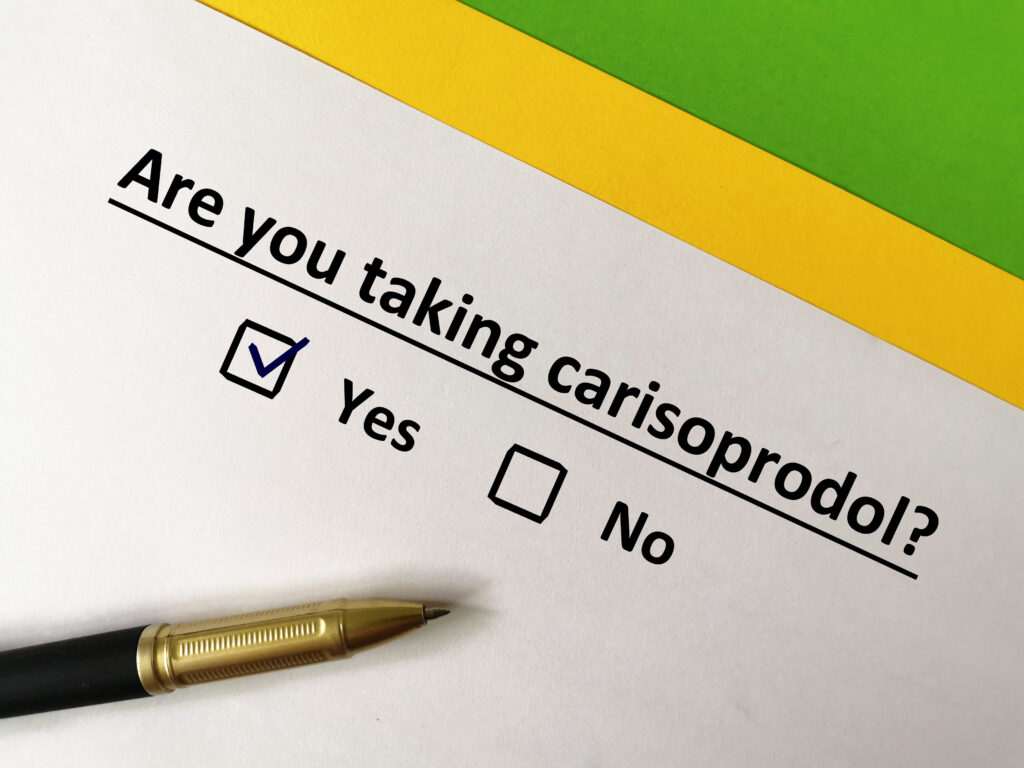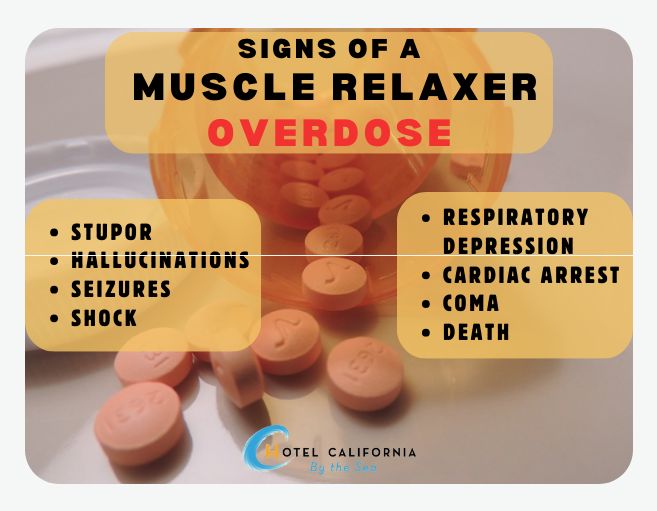Are Muscle Relaxers Addictive?
Muscle relaxants are prescription medications commonly used to treat acute and chronic back pain. Back pain conditions such as muscle spasms, spasticity and musculoskeletal pain rank in one of the top five reasons why many people seek out medical care. According to a published study from the National Library of Medicine, low back pain continues to rank among the top five reasons for doctor visits in the United States. A combination of physical therapy and prescription muscle relaxers is usually the first line of treatment and standard of care when it comes to treating back pain.

An estimated two million American adults reported having used muscle relaxants, according to the U.S. National Center for Health Statistics. Some of the more popular brands of muscle relaxers include Flexeril (cyclobenzaprine) and Soma (carisoprodol). In 2011, doctors wrote an average of 25.2 million prescriptions for Flexeril and other medications containing cyclobenzaprine.
What are Muscle Relaxers?
Muscle relaxers are central nervous system depressants and cause sedative effects that help prevent the nerves from sending pain signals to your brain. It blocks the transmission of pain at the neuromuscular level in an attempt to reduce the level of pain you experience. Contrary to what many people believe, muscle relaxers do not actually work on the muscles, they work on our brains and affect how our brains and nerves send signals to each other. This technically makes the medication a full-body relaxant and not just focused on the area of pain we are trying to target.
In general, muscle relaxants are prescribed for short-term use with a recommendation for up to three weeks of usage. Muscle relaxers offer only temporary alleviation of pain and there are very few studies about both the short-term and the long-term efficacy and safety of using them.
Because of the sedative effects of the drug, there is a potential for developing dependence and addiction. Though muscle relaxants are not generally considered to have addictive properties, when mixed with other substances such as alcohol, there is a greater risk for abuse and addiction.
What are the different types of Muscle Relaxers?
Muscle relaxers fall into two general categories: antispastics and antispasmodics. There are no over-the-counter muscle relaxants. Antispastic skeletal muscle relaxants treat spasticity. The medication acts on the nerves to improve muscle tightness and control involuntary spasms. Spasticity is a disruption in muscle movement patterns that causes muscles to contract all at once when moving. It is often caused by damage to nerve pathways within the brain or spinal cord that is responsible for controlled movement and stretch. Examples of how and why spasticity can occur can be due to cerebral palsy, multiple sclerosis, stroke and a brain or head injury. Brand name medications include Lioresal (baclofen) and Dantrium (dantrolene).
Antispasmodic skeletal muscle relaxants are usually prescribed to treat lower back pain and muscle spasms. It works by decreasing muscle spasms by changes in signals from the central nervous system. Examples of antispasmodics include Soma (carisoprodol), Flexeril (cyclobenzaprine), Metaxall (metaxalone), Robaxin (methocarbamol) and Norflex (orphenadrine).

Are Muscle Relaxers addictive?
Can muscle relaxant use or overuse become addictive? All muscle relaxers produce sedative and calming effects on the body. This characteristic is often the biggest incentive for those who abuse the drug. The feelings of drowsiness and sedation lead users to take higher doses of the drug or take the drug more frequently than recommended. Though it does not produce a euphoric effect, the feelings of intense sedation can be just as addictive.
According to research from the Perelman School of Medicine at the University of Pennsylvania, office visits to prescribe muscle relaxants tripped from 2005-2016. The prescription is much easier to obtain compared to narcotics or other pain relievers, making it easier for those who are addicted to obtain it.
The most popular brands of muscle relaxants, Flexeril and Soma, are also the most commonly abused. The National Institute on Drug Abuse says that more than 50 million Americans have abused Flexeril at least once in their life. According to the DEA in 2010, there was an estimated over 12,000 reported ER visits due to muscle relaxant abuse specifically centering on Flexeril.
According to the US Department of Justice, an estimated 2 million people have abused Soma at least once in their lives. Addiction to muscle relaxers has slowly been rising and part of that is due to the ease of access as well as the combination of using it with other substances such as alcohol and opioids.
When abused, muscle relaxers can become addictive and even lead to the experience of withdrawal symptoms if drug dosage is reduced or drastically stopped. Symptoms of withdrawal include headaches, nausea, vomiting, drowsiness, insomnia, shaking and tremors, impaired cognition and balance, abdominal cramps, muscle twitching, anxiety, psychosis and seizures.
Dangers of Muscle Relaxant Abuse
Despite the low risk for muscle relaxant abuse, it is still possible and it can be just as dangerous as other types of drug addictions. Muscle relaxants stay in the body for at least 48 hours. It can be especially dangerous when the drug interacts with other central nervous system depressants such as benzos, opioids, or alcohol. In 2016, an estimated 70% of patients who were prescribed muscle relaxants, were also prescribed opioids.
When used with these drugs, it can cause extreme sedation, and respiratory depression and eventually lead to overdose. Overdose symptoms include hallucinations, seizures, cardiac arrest, coma and even death.
Check Your Insurance Coverage for FREE
Find out if your insurance covers addiction treatment in minutes. We accept most insurance!
Other dangerous side effects include:
- Extreme sedation
- Fatigue
- Weakening of muscles
- Depression and anxiety
- Decreased blood pressure
- Irregular heart rate
- Seizure
- Confusion
- Swelling of liver
- Low white blood cell count
- Paralysis
Signs of Muscle Relaxant Addiction
- Running out of a prescription too quickly
- Taking larger doses than recommended by a doctor
- Going to multiple doctors to receive more medication
- Lying about back pain or injuries in order to get a prescription
- Changes in appetite
- Changes in sleep patterns
- Borrowing or stealing money to buy more drugs
- Losing interest in activities once loved
- Isolating from friends, family and loved ones
- Wanting to quit muscle relaxants be unable to
- Mixing muscle relaxant use with other substances such as alcohol and opioids
- Needing to increase the dosage in order to feel the same effects
- Experiencing withdrawal when drug use has stopped or significantly decreased
Reach out to Hotel California by the Sea
We specialize in treating addiction and other co-occurring disorders, such as PTSD. Our Admissions specialists are available to walk you through the best options for treating your addiction.
Treatment for Muscle Relaxant Addiction
Addiction to muscle relaxers is not common but can still be a very dangerous condition. They are used as the standard of care in combination with physical therapy to help treat chronic and acute back pain. The use of muscle relaxers is still fairly new and some studies have found that they might not even be more effective than regular over-the-counter pain medications such as Tylenol or Advil. There are still very few studies that show the long-term effects of the drug. Despite being a rare occurrence, when abused, muscle relaxers can cause damage and lead to substance addiction.
At Hotel California by the Sea, we treat clients with all types of substance addictions. This includes addiction to prescription medications such as muscle relaxers. We provide detox, residential care, and outpatient programs. In addition, we also provide evidence-based treatments such as CBT, EMDR therapy and group therapy. These types of cognitive treatment methods have proven especially effective in helping patients better understand their addiction and how to best manage and cope. Hotel California by the Sea provides a well-rounded curriculum of treatment care to clients in all stages of addiction treatment and recovery.
References:
https://my.clevelandclinic.org/health/treatments/24686-muscle-relaxers
https://firststepbh.com/blog/are-muscle-relaxers-addictive-signs-and-symptoms/
https://www.rehabcenter.net/commonly-abused-muscle-relaxers/
https://www.pennmedicine.org/news/news-releases/2020/june/long-term-use-of-muscle-relaxants-has-skyrocketed-since-2005
https://www.ncbi.nlm.nih.gov/pmc/articles/PMC2858432/
https://addictionresource.com/drugs/muscle-relaxers/
https://www.addictioncenter.com/stimulants/antidepressants/flexeril/
